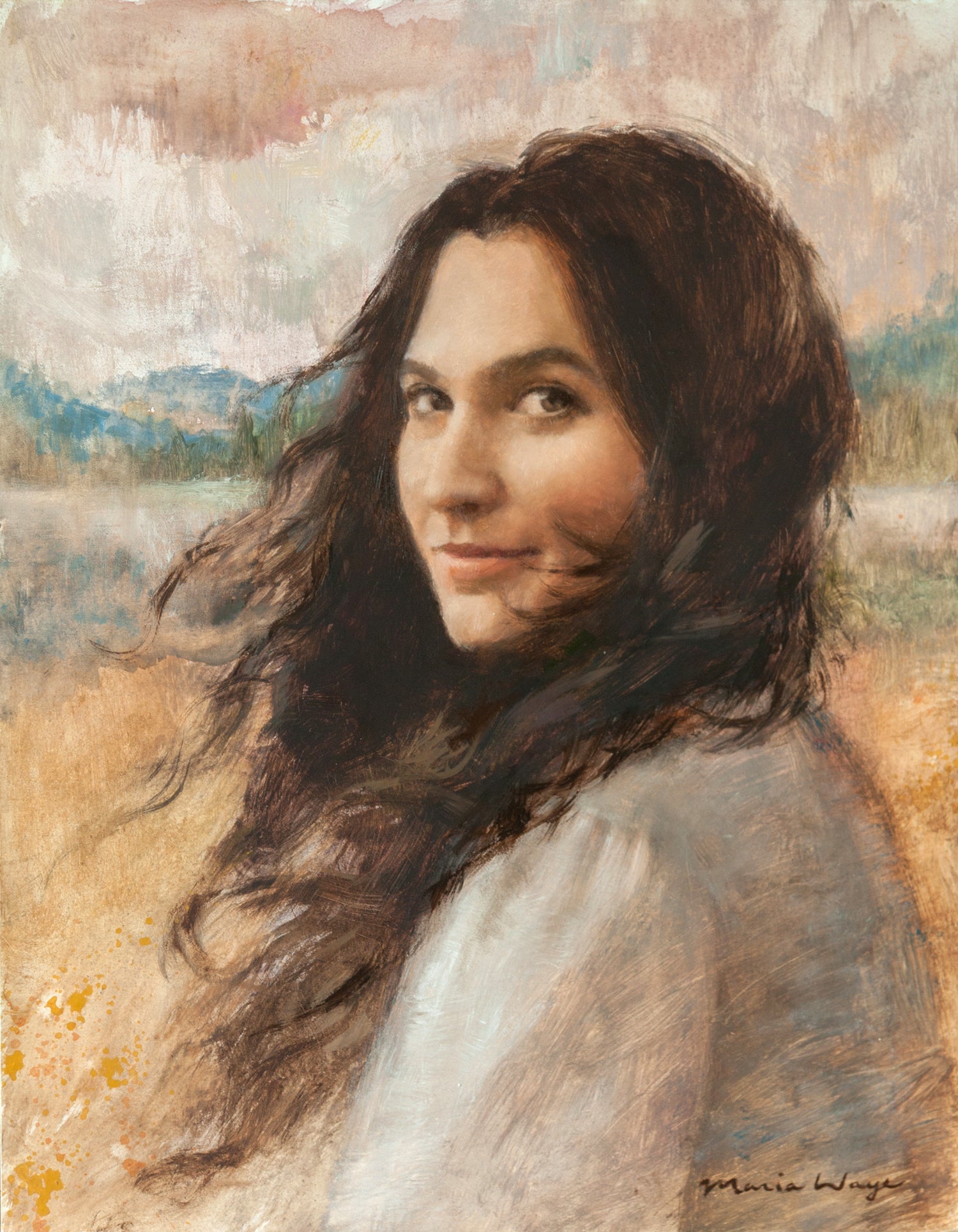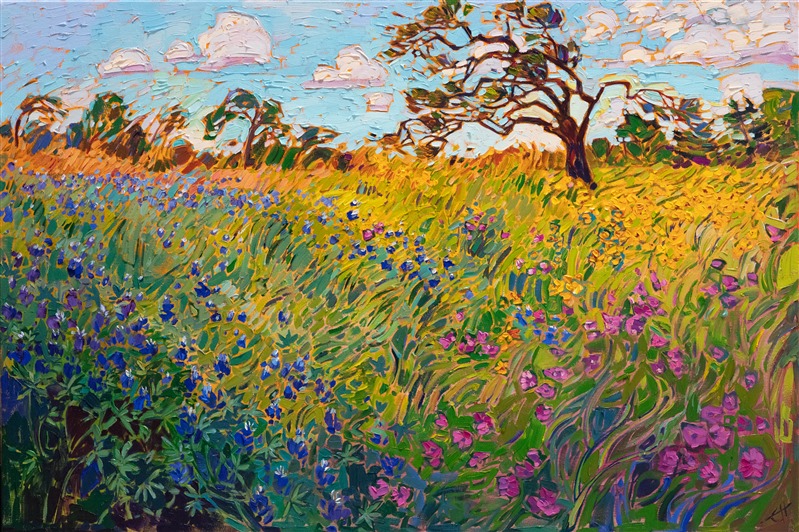The Benefits of Acquiring Oil Paintings: Why They Are a Timeless Investment
The benefits of getting oil paintings extend past mere aesthetic appeals. These artworks bring historic relevance and cultural value, making them worthwhile additions to any kind of collection. Their one-of-a-kind textures and methods add to an appealing aesthetic experience. In addition, well established artists often see their job value in time, presenting a potential monetary advantage - oil paintings for sale. As one explores the multifaceted factors for investing in oil paints, the much deeper ramifications of such a selection ended up being progressively noticeable
The Aesthetic Charm of Oil Paints
The allure of oil paintings hinges on their abundant textures and lively shades, which can transform any type of area right into an interesting setting. These art work possess a depth that astounds visitors, attracting them into the ins and outs of the brushstrokes and the interplay of light and shadow. The shiny coating of oil paint boosts the aesthetic experience, enlivening scenes and topics in a manner that mediums often can not achieve. Additionally, the range of designs-- from classical to contemporary-- permits for a diverse choice that can enhance any kind of decoration. The emotional resonance communicated with color options and strategies includes a layer of link in between the viewer and the artwork, making oil paintings not simply ornamental things, however effective expressions of imaginative vision.
Historical Value and Cultural Worth
Oil paints serve as vital web links to a creative heritage, showcasing methods and designs that have actually advanced over centuries. They envelop cultural expressions and identities, reflecting the worths and narratives of their time. By getting these jobs, individuals add to the preservation of background and the admiration of diverse cultural heritages.
Imaginative Heritage Conservation
While many may forget the relevance of artistic heritage, acquiring oil paints plays an essential role in preserving cultural and historic narratives. These artworks act as aesthetic documentation of their time, recording the essence of social values, customs, and historic events. By acquiring oil paintings, collection agencies add to the safeguarding of cultural heritages, guaranteeing that future generations can learn and appreciate from these imaginative expressions. Each piece mirrors the distinct story of its designer and the context in which it was made. Additionally, the ongoing recognition and screen of oil paintings in various setups assist to cultivate an understanding of varied creative motions, improving the cultural landscape. For that reason, purchasing oil paints is not merely a monetary decision however an act of cultural stewardship.
Cultural Expression and Identification
Art serves as an effective medium for cultural expression and identity, showing the diverse stories that form societies. Oil paintings, particularly, record the essence of cultural heritage, illustrating sociopolitical climates and historical contexts. Each brushstroke communicates stories and feelings one-of-a-kind to certain practices, allowing viewers to involve with the artist's cultural background. This connection promotes a feeling of understanding and belonging among different areas. Furthermore, oil paints frequently serve as aesthetic paperwork of cultural advancement, showcasing changes in identity gradually. The financial investment in these art work not just supports artists yet likewise preserves social heritages, making them significant properties for enthusiasts. Eventually, oil paintings enhance one's admiration for the details of human experience and the rich tapestry of social identity.
Appreciation in Value With Time

The appreciation of oil paintings with time is affected by various elements, consisting of historical value patterns that mirror altering preferences and cultural significance. In addition, the credibility of the musician plays a vital function in determining the art work's market price, commonly increasing as the artist gains recognition. Market need variations can even more affect costs, making oil paintings a potentially rewarding financial investment for collectors.
Historical Worth Trends
As collectors look for to buy concrete possessions, the historic value fads of oil paints disclose an engaging story of appreciation with time. Historically, oil paintings have shown a constant upward trajectory in value, especially for jobs by recognized musicians. Economic cycles and market need have actually affected these trends, with durations of boosted passion usually leading to significant rate surges. Auction documents regularly highlight the remarkable returns accomplished by legendary items, better enhancing the idea of oil paintings as viable lasting financial investments. In addition, social activities and changes in collector preferences have actually periodically spurred unanticipated gratitude, revealing that the art market, while rather unpredictable, generally prefers quality oil paints. Understanding these historical patterns can direct investors in making informed choices.
Artist Online Reputation Influence
While the credibility of an artist plays a vital role in the admiration of oil paints, it is necessary to acknowledge that this impact can vary substantially based on numerous elements. Developed artists, specifically those with a significant historical or cultural impact, often tend to see their jobs appreciate a lot more quickly. Conversely, lesser-known or emerging musicians might not experience the very same level of demand, influencing their artwork's worth. Furthermore, the musician's ability to produce a constant body of job and preserve significance in the art world can affect long-lasting appreciation. Collection agencies typically look for jobs from musicians that are recognized by respectable galleries and organizations, which can better improve the value of an oil painting with time, making musician track record a vital factor to consider in financial investment choices.

Market Need Variations
How do market need variations affect the admiration of oil paintings over time? The value of oil paints is inherently connected to market need, which can vary based upon financial conditions, fads, and collection agencies' choices. In times of financial success, demand typically climbs, bring about raised costs as even more buyers go into the marketplace. Conversely, throughout financial declines, demand may diminish, creating values to stagnate or even decline. In addition, the popularity of certain artists can change, impacting their work's charm. Inevitably, recognizing market need is necessary for investors, as well-managed collections can appreciate significantly in time, showing both the skill of the artist and the more comprehensive market dynamics. This interaction emphasizes the significance of tactical acquiring in oil painting investments.
Distinct Appearances and Methods
Oil paints mesmerize customers with their distinctive structures and strategies, showcasing the musician's proficiency over the medium. The thick application of paint, called impasto, develops a three-dimensional result, inviting touch and enhancing aesthetic deepness. Musicians frequently utilize different brush strokes, layering, and polishing approaches to achieve elaborate information and luminous shades. This adaptability permits rich contrasts and refined changes, making each artwork distinctively meaningful. The sluggish drying time of oil paint enables musicians to mix colors flawlessly, resulting in dynamic tones and smooth slopes. These methods add to the painting's general character, making it an engaging centerpiece. Each oil painting acts as a sign of the imagination and ability inherent in conventional creative methods.
Convenience in Home Decoration
The distinct structures and methods of oil paints not only showcase creative skill but also improve their convenience in home decoration. These art work can flawlessly enhance various interior designs, from contemporary minimal to standard beauty. Oil paintings function as prime focus, drawing attention and triggering conversation amongst visitors. Their rich shades and deepness can harmonize with various color combinations, making them versatile to altering design patterns. Additionally, the psychological vibration of oil paints can create atmosphere, whether it be heat in a comfortable living-room or vibrancy in an imaginative work space. By integrating oil paints, home owners elevate their spaces, changing them into thoughtfully curated environments that show individual preference and artistic recognition. Ultimately, oil paintings are an enduring option for boosting home looks.
Link to Popular Artists
While several art forms can evoke appreciation, buying oil paintings often establishes a distinct connection to popular artists throughout background. Owning an oil painting permits collectors to involve with the innovative visions of masters like Van Gogh, Monet, and Rembrandt. Each brushstroke symbolizes the musician's feelings, methods, and intents, offering understanding right into their globe. This connection goes beyond time, as each item carries a narrative that shows the historic and social context of its creation. Collectors not only obtain an artwork yet likewise a piece of the musician's heritage. As art enthusiasts discover the tales behind these paints, they gain a deeper admiration for the workmanship and artistic motions that formed their development, improving the value of their financial investment.
Psychological and Psychological Advantages of Art
Art regularly acts as a powerful stimulant for mental and emotional health. The visibility of oil paintings in a living area can evoke a variety of emotions, from peace to motivation. Their detailed information and vivid shades supply audiences a getaway, permitting reflection and reflection. Researches suggest that engaging with art can decrease tension and anxiousness, promoting a feeling of calmness. Furthermore, owning original art work can produce an individual connection, enhancing feelings of pride and happiness. This psychological bond commonly leads to a deeper admiration of one's environments, transforming a house into a home. Eventually, the mental advantages of art prolong past visual appeals, adding to general psychological health and enriching life experiences.

Regularly Asked Inquiries
How Do I Choose the Right Oil Paint for My Area?
Selecting the appropriate oil painting includes taking into consideration the space's color plan, dimension, and general visual. One need to evaluate personal preference, the painting's psychological influence, and exactly how well it enhances existing style before making a decision.

What Elements Impact the Worth of an Oil Painting?
The worth of an oil paint is affected by aspects such as the artist's credibility, provenance, historical significance, problem, rarity, and market need. Each aspect adds to total worth and desirability among collection agencies.
Exactly How Can I Take Care Of and Maintain My Oil Painting?
To look after and maintain an oil paint, one ought to regularly dirt it with a soft towel, avoid direct sunlight exposure, control humidity levels, and consider professional cleaning to preserve its vibrancy and honesty.
Are There Particular Artists Understood for Their Oil Paints?
Numerous musicians are renowned for their oil paints - oil paintings for sale. Noteworthy numbers include Vincent van Gogh, Claude Monet, and Rembrandt, each commemorated for their unique methods and payments to the art world through vibrant, distinctive oil tools
Where Can I Acquisition Authentic Oil Paintings?
Genuine oil paintings can be bought from trustworthy galleries, art fairs, and on-line systems concentrating on art. Collection agencies must verify the credibility and provenance before purchasing to assure a valuable financial investment. Historically, get more info oil paintings have actually shown a constant upward trajectory in value, specifically for works by established artists. While the track record of a musician plays a necessary duty in the gratitude of oil paints, it is crucial to identify that this influence can vary considerably based on numerous aspects. Oil paintings captivate audiences with their unique textures and strategies, showcasing the artist's proficiency over the medium. While many art forms can evoke appreciation, purchasing oil paintings often develops an unique connection to popular artists throughout history. The value of an oil painting is affected by factors such as the artist's track record, provenance, historical importance, rarity, condition, and market need.